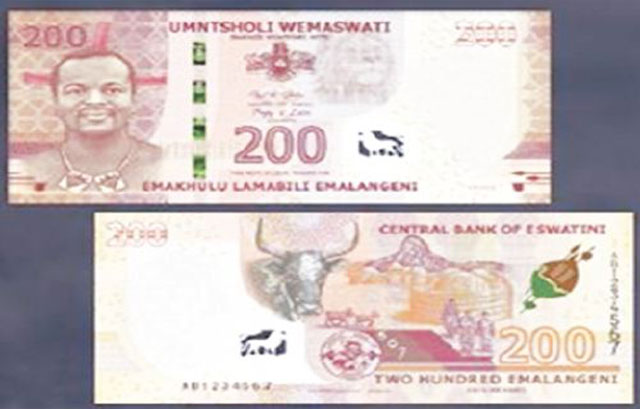By Nomfanelo Maziya | 2023-09-18

The Central Bank of Eswatini’s (CBE) release of the new banknotes to supplement those in circulation is an affirmative indication of the country’s economic demand for cash.
CBE Head Strategy and Communications Mandla Luphondvo said the demand for cash was driven by the country’s economic performance, which included inflation.
The Central Bank recently launched the new E200 bank notes with updated features.
They were launched by CBE Governor Dr Phil Mnisi at the Eswatini International Trade Fair (EITF) 2023.
Mnisi outlined the changes incorporated into the new notes such as the change from Central Bank of Swaziland to Central Bank of Eswatini, an improved portrait of His Majesty King Mswati III, as well as signatures of the current CBE governor and minister of Finance Neal Rijkenberg.
Mnisi also highlighted that there were a few security features which had been included.
“One prominent one is that when you try and print your own copy it will just turn black. There are security features inside this paper that will protect the note,” said Mnisi.
The governor highlighted that the release of the new notes was meant to supplement those in circulation because the stock levels had gone down.
Although Luphondvo could not reveal the value of the reprinted notes, he explained that as banknotes were circulated, they suffered damages over time, causing the stock of notes to deplete.
“They get soiled, dirty, or mutilated and such banknotes are destroyed and replenished with new banknotes,” said Luphondvo.
“Part of the responsibility of the Central Bank is to ensure that there is an adequate supply of banknotes and coins in Eswatini,” he said.
Luphondvo said this was executed through monitoring of banknotes stock levels, which was guided by the economic demand for cash.
“The demand for cash is driven by the economic performance of that country, which includes inflation,” he explained.
As part of the traditional cash life cycle process common in every central bank, notes were ordered to stock up as economic activities took place.
“Over time through this lifecycle process, stock of notes is depleted,” said Luphondvo.
He said central banks around the world printed banknotes and mint coins to replenish their stock.
“Banks withdraw notes to issue to their clients,” he said.
He added: “Used notes are received by banks and deposited into the Central Bank from time to time and CBE processes them on its high-tech machines which automatically verified the fitness of each note to be re-issued back into circulation.”
He further explained that notes that failed the tests were shredded and destroyed whilst those that passed the test were re-stocked and issued back to the system. “The E200 banknotes versions that are still in stock will continue to co-circulate with the 2023 reprinted E200 banknotes,” he said, echoing the governor’s sentiments during the launch of the notes. He added that as all CBE banknotes denominations, the E200 printed in 2023 will co-circulate with the existing E200 versions until the old notes gradually diminish.
share story
Post Your Comments Below
All material © Swazi Observer. Material may not be published or reproduced in any form without prior written permission.
Design by Real Image Internet